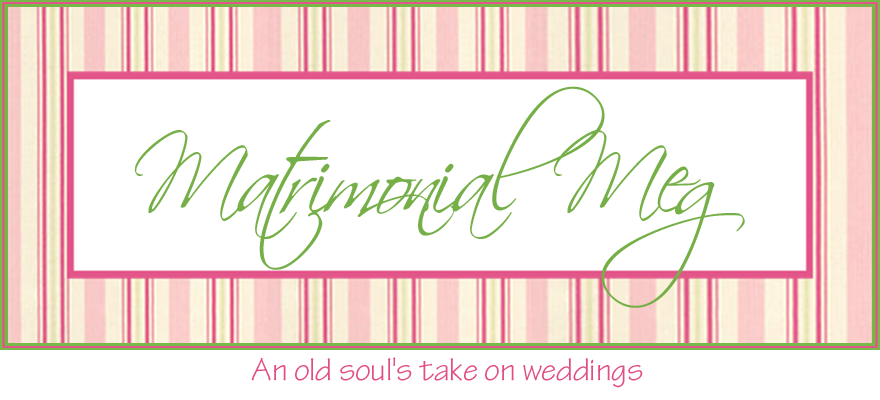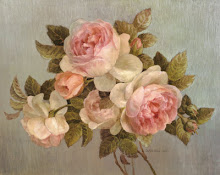Currently, people are buying vintage gowns, cars, furniture, you name it. Well, let me introduce you to vintage-cut diamonds! For those of you that are exceptionally romantic, and love the idea that your stone could have been worn by someone over 200 years ago, take a look and be prepared to fall in love.... again.
Photo courtesy of Jewels by Erica Grace |
When viewing and evaluating antique diamonds, be aware that you can't judge them as you would their modern counterparts. Antique diamonds have a soft romantic glow that is hard to resist. They were cut during a time when candles or lamps were the primary means to see, which is fairly impressive. These vintage diamonds usually have smaller tables, higher crowns, deeper pavilions and thicker girdles than modern cuts. The deeper cut holds the light longer and bounces it around, resulting in a kind of fire that is not often seen in modern diamonds.
If you are a person who considers the most desirable diamonds to be of D-G color, you are going to be in for a major shift in expectations. Typically, most available antique cut stones will be lower in color. There are two reasons for this. First, there were fewer diamond mines operating then than there are now, and the stones from those mines were of a more ivory hue. Secondly, in the 1970's and 1980's many of the high color antique stones were unfortunately recut with modern technology. Luckily, old cuts face up considerably whiter than modern cuts of the same grade. For example, a J colored antique stone still appears very white to most people.
Until the early 1900's, diamonds were cut by hand. As you can imagine, this was a painstaking and time-consuming process. The same can be said about the mountings created for these beauties. The hand-crafted settings from years past can't be beat. I adore the look and thought behind hand-made jewelry, and many prefer the appearance to cast settings.
What truly makes an antique diamond so special is that it is absolutely unique. You could gather ten diamonds of identical specifics (carat weight, color, dimensions) and wind up with ten very different looking stones. If you have an old cut stone, you know that it is absolutely one of a kind.
Below are four examples of antique diamond cuts. If you are looking for an engagement ring, be prepared to start lusting over these gorgeous stones.
Rose Cut
Earrings for sale at Jewels by Erica Grace
Rose cut diamonds were initially on the scene in the 1500's in Antwerp, Belgium. The cut got it's name because it slightly resembles a rose. The bottom of a Rose cut is completely flat and the crown is domed shaped, with the facets meeting at a point in the middle. Essentially, this cut has a crown but no pavillion. These stones are distinguished by the number of facets, the less facets it has, the older it most likely is. While rarely used for an engagement stone, rose cuts make beautiful earrings, pendants, and brooches. Perhaps they can be your "something old" on your wedding day.
Old Mine Cut
 |
| For more pictures of this stone, for sale at Jewels by Erica Grace, please click here. |
 |
| For more pictures of this ring, for sale at Jewels by Erica Grace please click here. |
Around since the 1700's, this is the precursor to today's cushion. Sometimes, an "OMC" is also referred to as an antique cushion. They typically have a soft round or oval shape, and feature the pillow-like appearance of a cushion. Old miner's have a high crown, resulting in a smaller table and often a larger cutlet, visible through the table. I adore the broad flashes these stones give off, a product of the chunky facets OMCs possess. The OMC is fit for any feminine and girly-girl looking for something different than what you can find at Tiffany's.
Old European Cut
 |
| For more pictures of this ring, for sale at Jewels by Erica Grace please click here. |
The ancestor of the modern round brilliant, the Old European Cut is a gorgeous look. It is a round shaped stone, with small to medium sized cutlets, a small table, and a substantial crown. The large facets create beautiful patterns, often resembling a flower or checkerboard appearance. "OEC's" have been donning ladies fingers, necklaces, and ears since the late 1800's. If you love classic, sleek, and historical, this stone is for you.
Transitional Cut
 |
| To view more photos of this diamond, please click here. |
 |
| For more pictures of this ring, for sale at Jewels by Erica Grace please click here. |
Where do you find the beauties of yeseteryear? Browse antique jewelry stores, your grandmother's jewelry box, estate sales, and even some brick and mortar jewelry stores. I also recommend Jewels by Erica Grace, a budding business of two women with a passion for antique stones with character. Singlestone is also a premier dealer in antique jewelry and reproductions. Oddly enough, Ebay is also a great resource in finding old cut stones.
Take it away, Marilyn!
*A very heartfelt thank you to my friend Melissa, for all of her wisdom in the world of antique diamonds.*










2 comments:
Jewels by Erica Grace is a great company. I bought a loose antique chushion from them three years ago. It's now sitting pretty on my ring finger in a gorgeous Leon Mege setting.
Thanks so much for posting about them. They truly are wonderful people do work with and I'm so glad to see Jewels by Erica Grace getting so much recognition!
Great reading your postt
Post a Comment